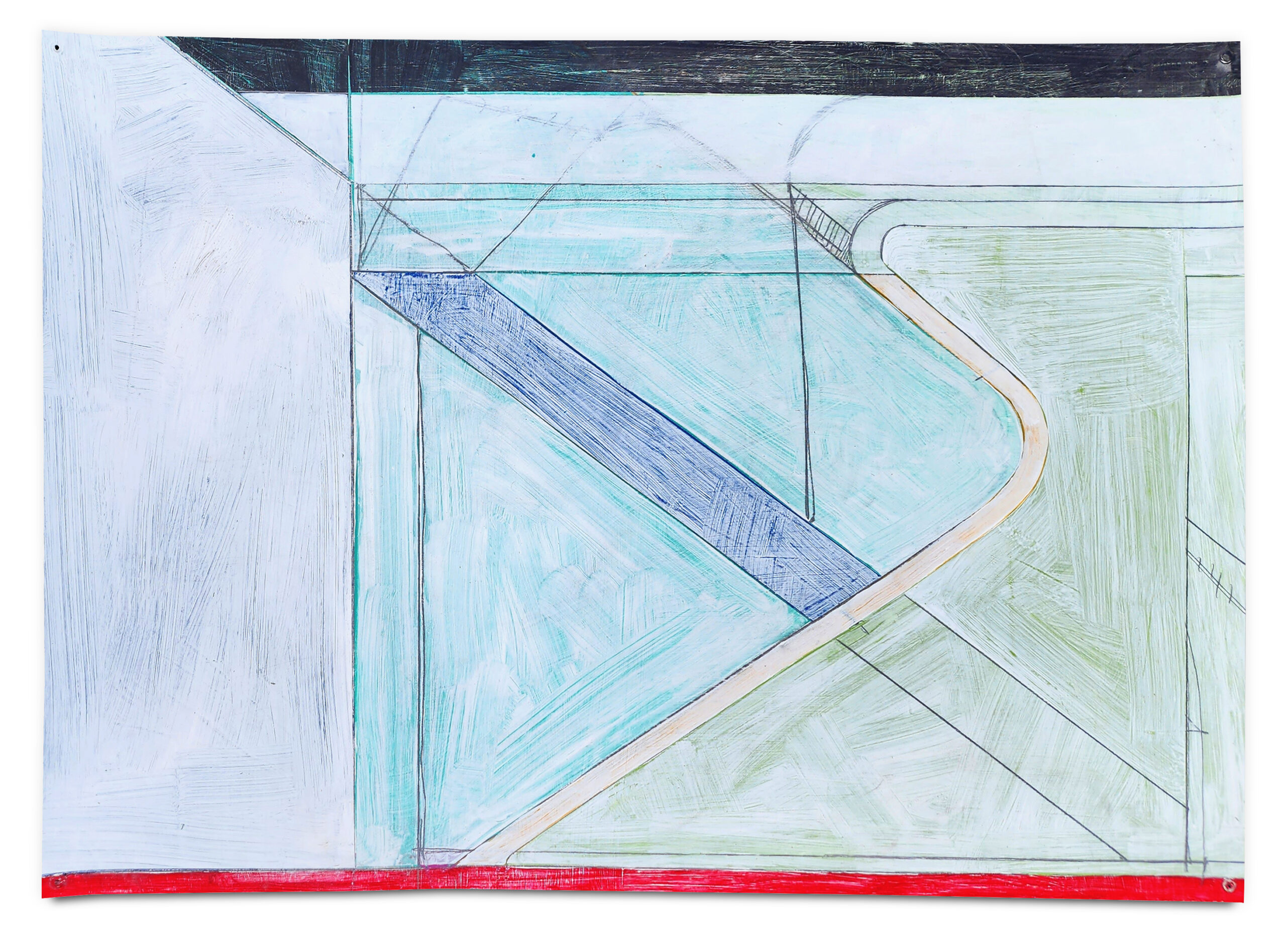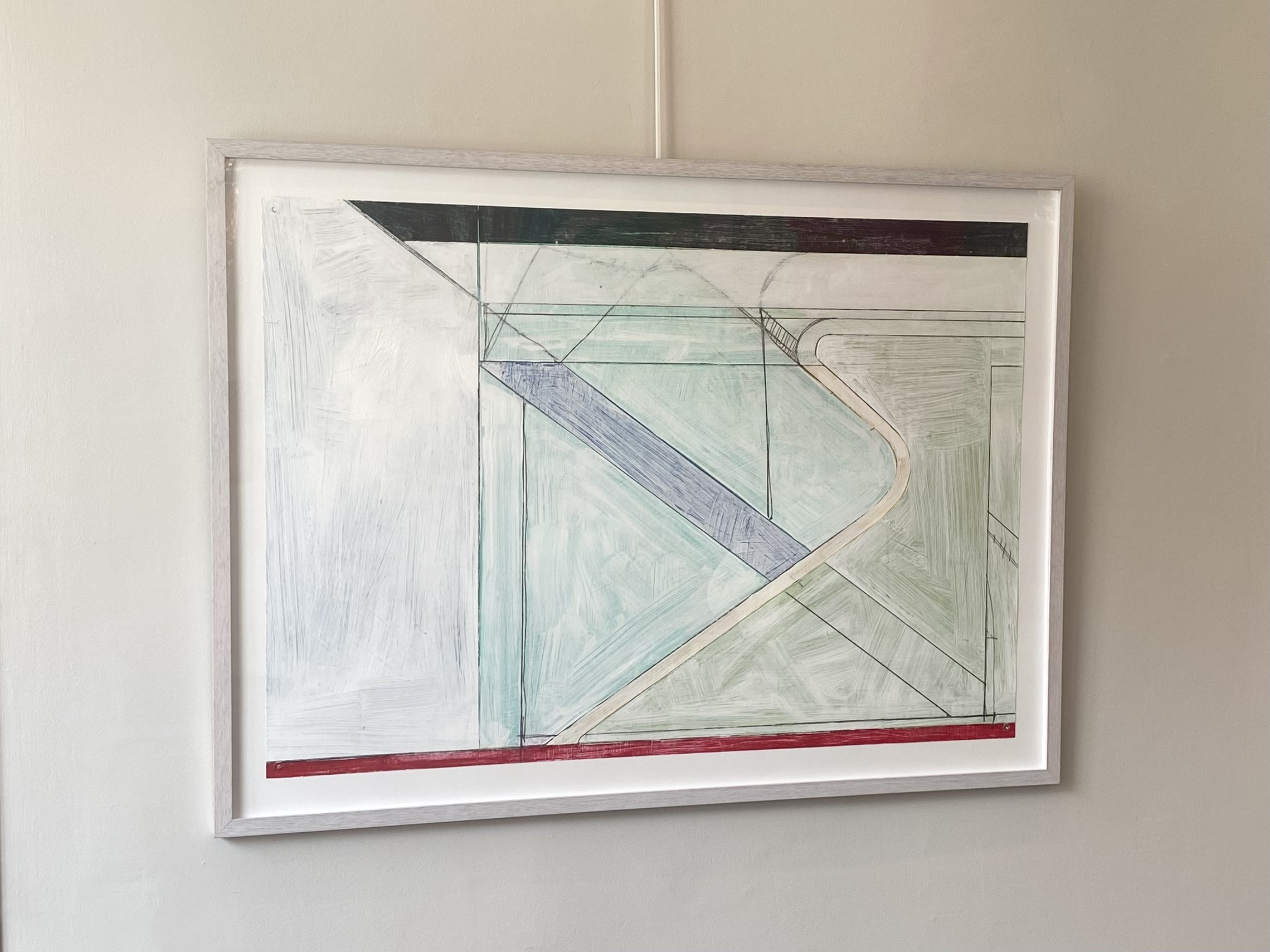

36.5″ x 49.5″ framed acrylic and pencil on paper $3400
available to view in CHARLESTON
FRANK PHILLIPS BIOGRAPHY
Frank P. Phillips has been professionally creating art for over 20 years. He received a BA with High Honors from Hobart College in 1997 and earned a MFA from the Maryland Institute College of Art in 2005. He currently lives with his wife Meg, daughter Bess, and their pets in the greater Charlottesville area where he teaches as the Visual Arts Department Chair and Varsity Squash Coach at St. Anne’s Belfield School.
About his work Phillips states, “My work uses a flat plane to convey the visual ideas of construction, mass, and volume. The formally arranged imagery is all invented, but takes cues from architecture and engineering (materials and the structures themselves), as well as the erosion and the decay of perceived ruin. The display of process is an integral component to the work; it tracks the time, mistakes, revisions, and the experience used to arrive to a resolved composition. The end results are pieces that embrace surface and relate the ideas of: the used, the weathered, the discarded, and the beaten. I aim to create a quiet calm to the work that is still able to convey a stoic presence. At its core, the compositions are about physicality and decision making. The immediacy of drawing and painting allows me to attack spaces on the canvas. The size of the plane forces me to use my entire body; the act of painting, drawing, erasing, and sanding all require a certain balance of touch and force. One idea completion may necessitate removal, thereby initiating another physical activity. As an artist, I need the action, and the work needs to be work; the labor is chronicled in the surface as removed elements are never really gone, only ghosts of the materials’ (pencil, charcoal, and paint) permanence. Compositions are constructed primarily with line. Line acts as a device for the illusion of suspension as well as enclosing or mapping a shape. There emerges a printmaking look to the surface (at times with embossed marks) achieved through rubbings and other treated materials. Subsequently, the compositions read as a sort of blueprint. The line-play between the “exact” straightedge is offset by the “imperfect” hand and creates a diagrammed visual tension.”
BACK TO ARTIST
